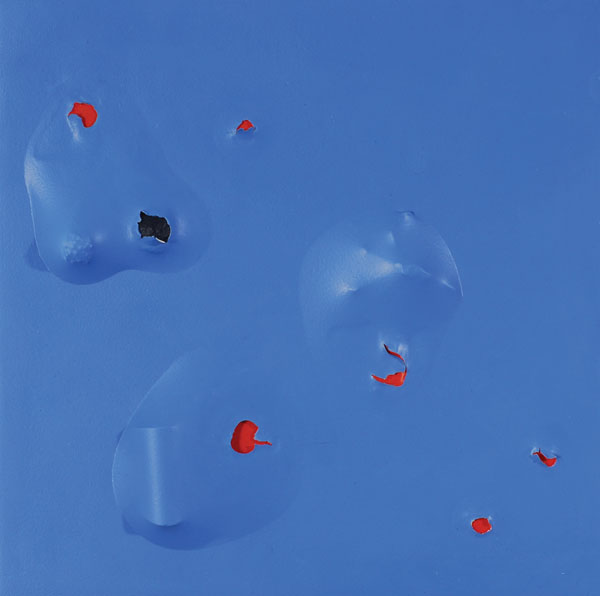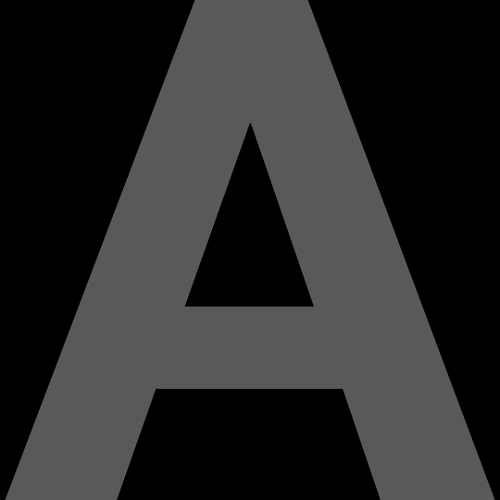
Anne Mestitz's empirical approach to making art reveals an ingenuousness that's full of creative possibilities. With this (added to a devil-may-care attitude to consistency of style) she manages to dart from method to method free from earnestness or defensive dogma. Mestitz's sharp inquisitiveness, paced by philosophical speculation, sustains her practice. Her work reflects the immediate and intuitive excitement she experiences when delving into subtle nuances of observation.
Although it would seem against the grain of Mestitz's modus operandi to generalise, her work adheres to a principle of synaesthesia. Not so much in terms of specific aspects of abnormal sense perception that artists like Kandinsky exploited, but as a way of challenging each and every boundary that divides and defines perception. She is primarily a sculptor (all the work in this exhibition is three-dimensional) but her use of colour and line suggests that the label of artist defined according to media is up for question, or even irrelevant.
In the work, Being Paint: Corrupted, image and form are conflated. An intense blue field of colour is revealed to be a skin, a torn membrane, underneath which the artist has inserted a variety of unidentifiable objects. Bright orange and black fill the gaps exposed by the lesions in the paint, providing a humorous optical jolt to the violated complexion of a faux colour-field abstract painting. Colour is torn between its particular physical manifestation and its optical classification. Being Paint: The roundness of paint, operates similarly. Regular pancake-size discs of paint, arranged in a stack, suggest excessive modes of categorisation; the way paint sets, its natural thickness and viscosity on pouring pushes colour into an esoteric form of engineering rather than aesthetics. Considering this extension of variables, Mestitz's titles are often revealing, as in The Colour of Orange, which appears to be a tautology. Such titles create imaginary sub-categories, colour being one thing, orange another. For this artist orange is not just a colour and colours are, in any case, arbitrary concepts. Splitting tautological repetition is her specialty.
Perhaps Mestitz's most familiar works are those that could be classed as three-dimensional drawings, made from various forms of wire or aluminium cable. These pieces hold a pivotal role in a diverse art practice and create a correlation of space and time. The black and white banded wire works denote serrated edges either as a directive to cut-along-the-dotted line or as boundaries, dividing one territory from another. One such work, Silent Protest, inspired by the voicelessness of Iraqi protestors in recent times, presents a cluster of invisible banners, outlines of placards whose text has been censored, cut out. Often though, these elegant linear structures plot the trajectory of a temporal stream - of consciousness or communication. In earlier work these forms corresponded to the temporal flow of eye movement or of conversation. In Interrupted Thought, the coloured bands signify the interrupted flow of intuitive thought; the subjective resonance of orange becomes the focus which the mind fails to hold on to. This tracking of duration is in direct contrast to abstract units of homogenous spatialised time. Mestitz is alluding to an epiphanic experiential process - the flow of things coming into being.
The Feel of Orange is a slim rectangular hollow box with a series of evenly spaced apertures that operate as sound holes; piano strings are strung over the holes and can be strummed to create sounds. The space inside is painted a glowing bright orange, appearing to emanate in tandem with the sound of the plucked strings. Mestitz speaks of this work in relation to her early memories of walking to school, strumming the rungs of fences in passing. Reminiscent of Marcel Proust's concept of unconscious memory, meditative states from the past are conjured up into the present. Time, no longer incremental, becomes threaded together by diverse synaptic impulses, back and forth through a temporal wormhole.












